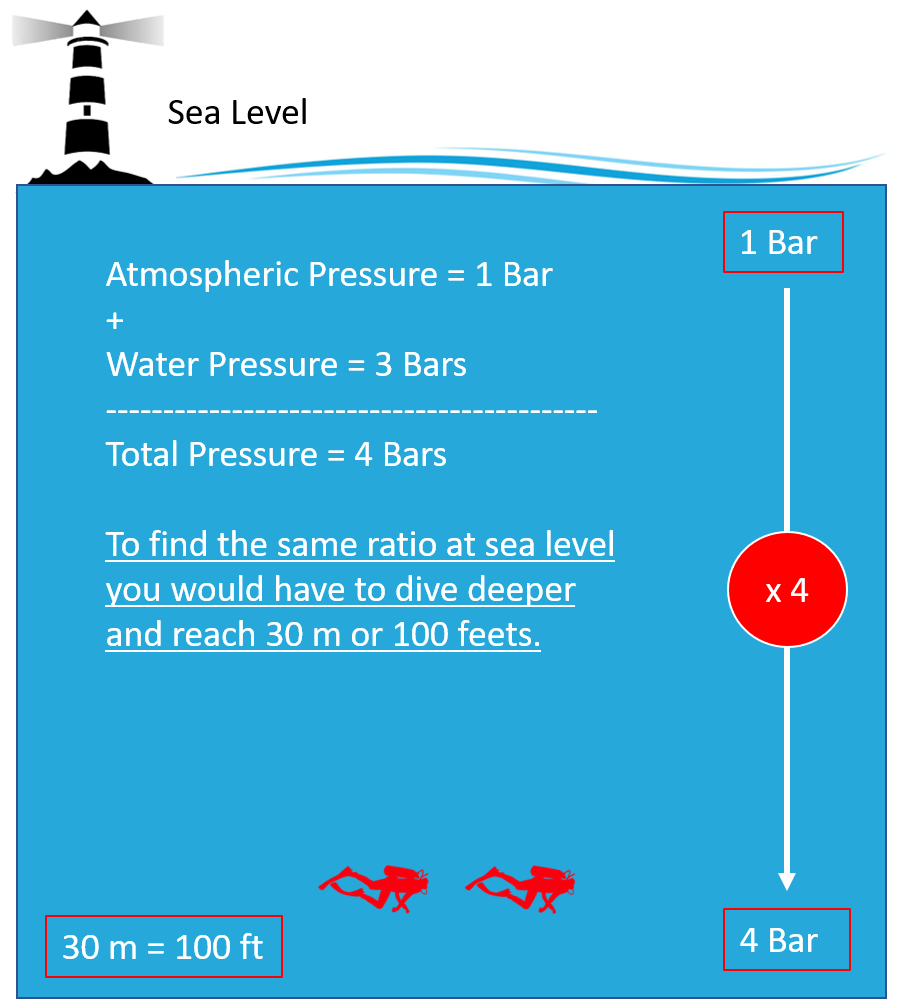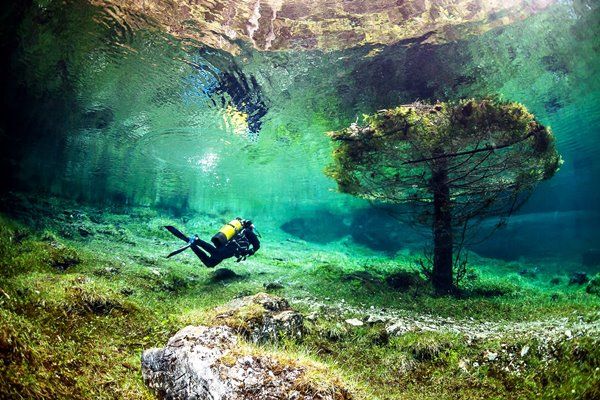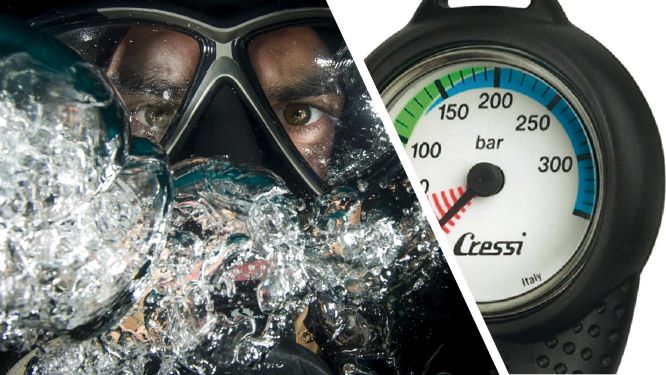While the huge majority of divers enjoy the splendour of the underwater world at sea or in the ocean, not every dive happens at sea level.
Actually, some of the most mesmerizing diving experience out there can be found in cold but crystal clear mountain lakes, and we would be crazy not to want a part of the fun.
But for us, scuba divers, venturing above sea level requires some adjusting.
In this article, I will give you a full refresh on what happens when diving in altitude and how it will impact your diving.
I also included a super easy to use calculator so you can simulate your dive parameter and safety stops based on both your altitude and diving depth.
What changes when diving in altitude?
For starters, let’s have a little recap of the relationship between pressure and scuba diving.
Before even entering the water, our body is already under pressure from the atmosphere of our beloved planet earth. At sea level, meaning altitude = 0, the atmosphere exerts a pressure which is more or less 1013 hPa, we often round this up to 1 Bar equivalent to 1000 hPa.
The atmosphere we are breathing being composed of a mix of gas commonly called Air which includes roughly 80% of Nitrogen for 20% of Oxygen, we can consider that our body is “saturated” of those gas at a pressure of 0.8 Bar of Nitrogen and 0.2 Bar of Oxygen.
The process of Scuba Diving involves breathing gas in an environment with increased pressure, which would be impossible to do if the source of Air was kept at the pressure of the surface. The deeper you would go the harder it would become to pump the air to your lungs with the sole strength of your lungs and you would end up suffocating quickly, hence why we don’t use 10 meter long snorkels.
To solve this issue, some really smart people invented regulators, which job is to equalize the pressure between the outside environment and your tank, allowing you to breathe with roughly the same amount of effort as at the surface.
Every 10 m, underwater increase the pressure by 1 Bar, meaning that after staying at 20m for a little bit you are now saturated with 3 Bars of Air Pressure or 0.8 x 3 Bars = 2.4 Bars of Nitrogen and 0.2 x 3 Bars = 0.6 Bar of Oxygen.
In a nutshell, this increased saturation of gas in your body is the source of all the risks related to decompression.
The actual depth of your dive doesn't mean the same
These facts don’t change when going into altitude, 10 m of water still equals one added bar of pressure. But what happens when you start from a lower level of saturation?
When going up in altitude, Air becomes rarer and the atmospheric pressure drops following this formula.
P(h)=1013 hPa * exp(−0.00012 * h)
Where h is the altitude in meters.
When using feet, you can use the following formula:
P(h)= 1013 hPa *(1-6.87535*10^-6*h)^5.2561
Don’t worry if these formulas looks awfull to you, I have created a simple tool below to do all these calculations for you.
The bottom line is, when you go up in altitude, you will start with a lower atmospheric pressure than at sea level, but because pressure always increases at the same rate underwater, you will double, triple or quadruple the amount of pressure faster than when diving at sea level.


And this is ultimately what really matters for your decompression. During the ascending phase of the dive, your goal is to bring back the pressure to the initial saturation levels (at the pressure you started your dive).
It doesn’t matter to your body if there was 4 or 3.2 bar of pressure at the bottom, all he needs is to come back to the initial pressure whether it was 1 or 0.8 bar. Following our example above, it will take your body as much time and effort to decompress from 24 m in a 2000 m high lake than from 30 m at sea, in both case he will have to divide the saturation by 4.
This is the same principle used by commercial saturation divers who stay for days in a hyperbaric environment. Their body just needs to bring itself back to the pressure levels of their living quarters and not sea level, allowing them to work for a longer period of time.
To plan you decompression accurately in altitude, you will have to adjust the depth of your dive to what we call “real depth” and use this real death to look up your decompression in your diving tables.
When using computers, nowadays most of them have integrated an altimeter which adjusts the decompression automatically, but some still need these changes to be done manually in their settings. Make sure you do that!!
Your Ascending Speed Need to Be Adjusted
More than the parameters of your dive, you will also need to adjust the depth of your safety stops and your ascending speed.
This is logical when you think of it… Your body is trying to divide by 4 your saturation in a shorter amount of time, because you are ascending from a shallower point.
To use our previous example, you will need to ascend from 24 m in the same amount of time it would normally take to ascend from 30 m.
So for example, at a speed of 9 m/minute (or 30 ft) ascending from 30 m (100 ft) should approximately take you 3.33 minute, if you want to take the same amount of time going up from 24 m (78 ft) you will need to adjust your speed to a bit more than 7m/minute or 24 ft/minute.
Adjusted Ascending Speed = Usual Ascending Speed* (Atmospheric Pressure in Bar / 1 Bar)
The Depth of Your Safety Stops Will Also Change
Following the same principles, the depth of your decompression stops will also need to be adjusted.
Safety & decompression stops depth are not set randomly. They are designed to be at the precise depth that allows optimal decompression for their given duration.
For example, doing a decompression stop at 8 m instead of 5 m will greatly impact its duration. Your computer will ask you to stay longer if he just simply doesn’t reset the stop from the start.
The depth of your stops is calculated following the same logic as the rest of your dive decompression (ascending speed, depth of the dive, time at the bottom, etc..).
Its goal is to help your body make time for readjusting to the pressure level at the surface. If you were in altitude you will have to adjust the depth of your stops to fit the ratio at which your body saturated during the dive.
Adjusted Depth of Stops = Depth of Stops at Sea Level * (Atmospheric Pressure in Bar / 1 Bar)
Altitude Diving Calculator - Real Depth, Ascent Speed, Safety Stops
To sum up all the info above, please feel free to play around with the calculator below.
Just choose which unit you prefer then insert your altitude and dive depth and it will calculate the rest for you.



